Water-Saving Landscaping Ideas for Traditional Homes
http://decor-ideas.org 09/20/2013 00:20 Decor Ideas
When we think of drought-tolerant, or xeriscape, design, typically Mediterranean and Southwestern-style homes and gardens come to mind. That's because since the dawn of gardening, those climates have always required water-efficient plants and trees. But what if you own a more traditional-style home, like a colonial or Victorian?
Those styles typically sport lawns with vast swaths of grass, hedges, rosebushes and other water-hungry plants. The good news is that there are plenty of options for grasses, shrubs and plants with lots of color that create beautiful landscaping even for traditional styles, and they won't suck your water system dry.
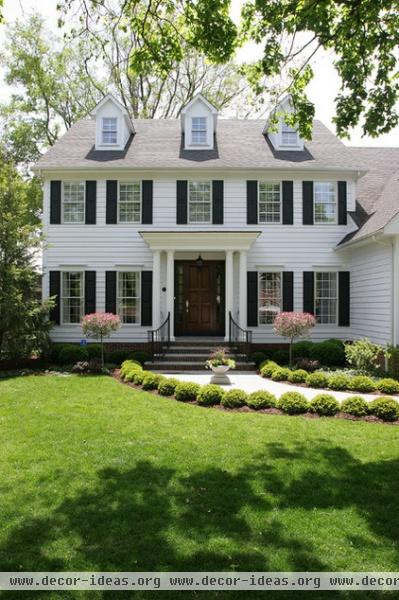
This colonial's big lawn, verdant shrubs and flower arrangements are absolutely stunning. This landscape goes by the book for Northeastern traditional style. But some homeowners might not want to quench the mighty thirst that this setup requires.
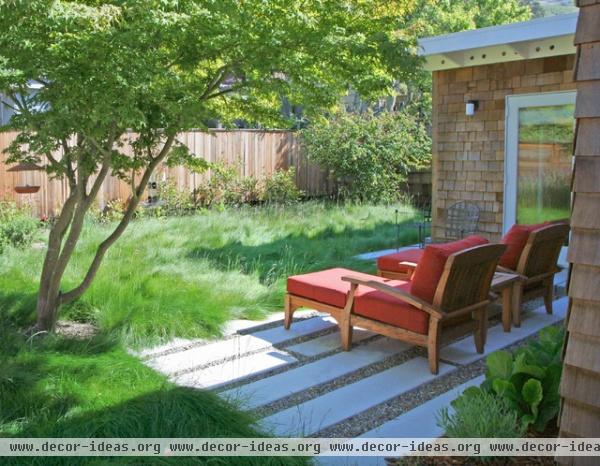
Not all grasses have the water demands of typical turf. Drought-tolerant No-Mow Fine Fescue or Buffalo grass replaces a standard lawn behind this shingle-style home.
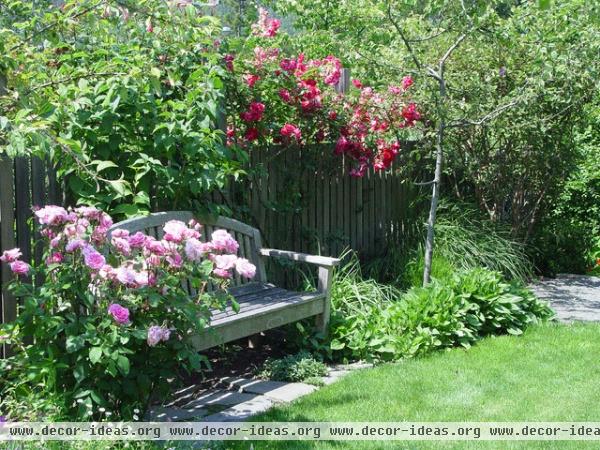
A splash of lavender from some roses or fuchsia from a bougainvillea would look picture perfect next to a traditional house. But maybe you don't have the time or money for the upkeep.
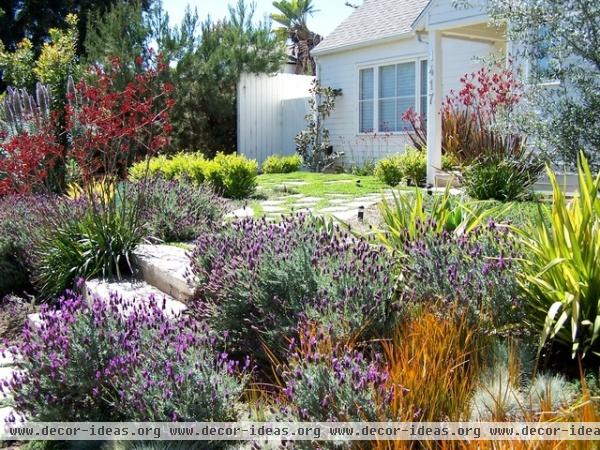
This traditional cottage offers the same bursts of color, with a "lawn" of creeping thyme and a rich and colorful front yard with a drought-tolerant ground cover and shrubs.
Large bushes of Spanish lavender (Lavendula stoechas) serve up some water-saving purple magic.
How to grow lavender
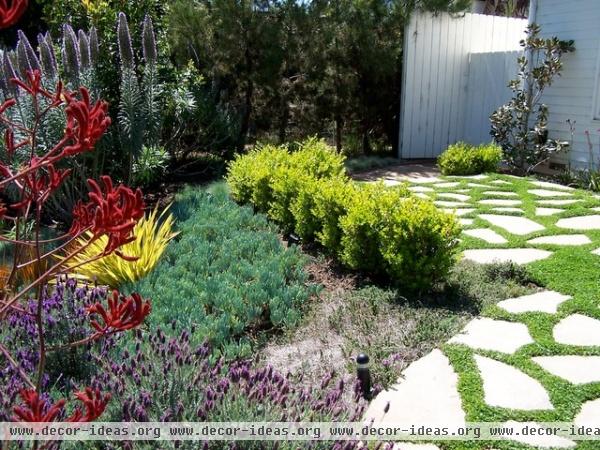
In another view of the same yard, these flagstones are surrounded by a carpet of creeping thyme (Thymus praecox articus) and bordered by colorful blue chalk sticks (Senecio mandraliscae), flax (Phormium hybrid), Spanish lavender (Lanvendula stoechas), kangaroo paw (Anigozanthos) and the large Pride of Madeira shrub (Echium fastuosum).
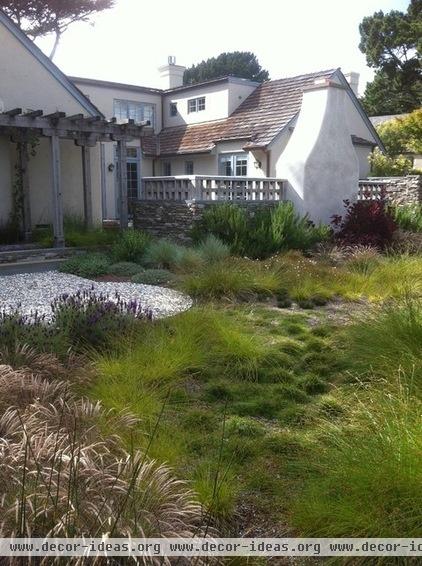
In yet a different lawn variant, the drought-tolerant grasses in this rustic heath provide this English country classic home with a soft green carpet, but one that is much more water efficient than manicured turf.
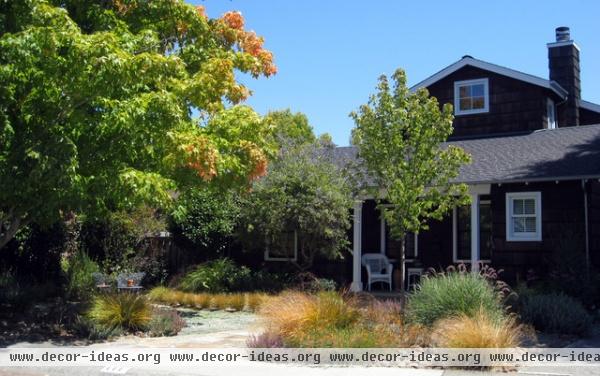
When you do want lots of green and color, combine different grasses and drought-tolerant flowering bushes, like one of the many forms of lavender. While most traditional flowers and lawns slurp up water, a yard like this can surround you with nature and color and be largely self-supporting once established. Here gorgeous fronds of Orange Sedge (Carex testacea) and fountain grass (Pennisetum) offer both color and volume, with graceful textures.
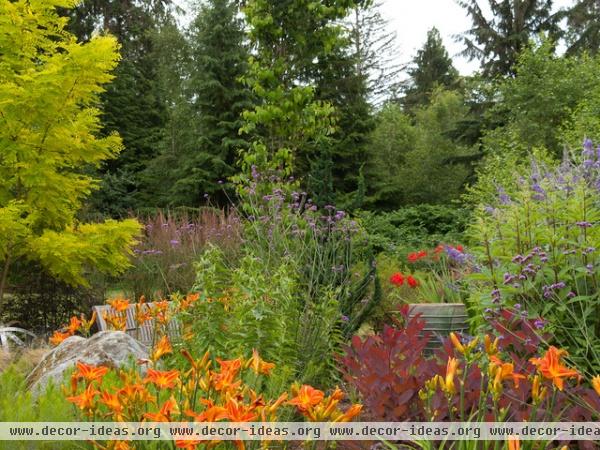
In this colorful garden, drought-tolerant plantings show that you can save water and still pile on all the reds, yellows, oranges, blues, greens and purples you want. Bright daylily (Hemerocallis) and reddish-hued smoke bush (Cotinus coggygria) form the foreground of this lovely landscape.
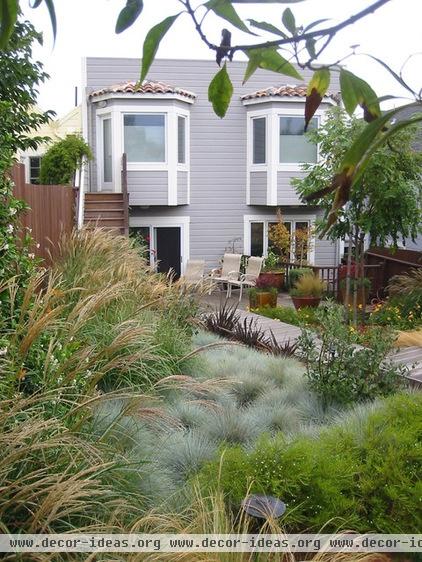
This Victorian is complemented by a variety of drought-tolerant grasses including blue fescue (Festuca glauca) and feather reed grass (Calamagrostis 'Karl Foerster')
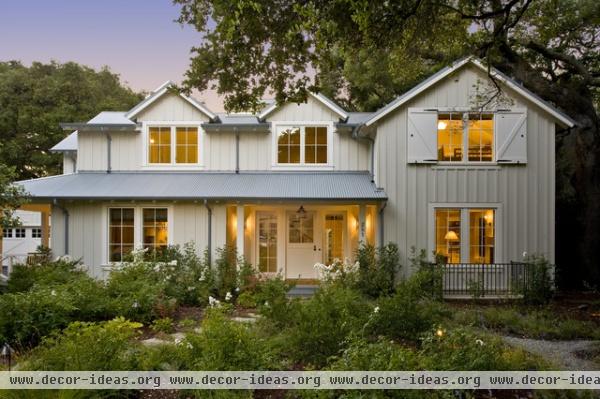
Drought-tolerant shrubs supremely complement this colonial farmhouse.
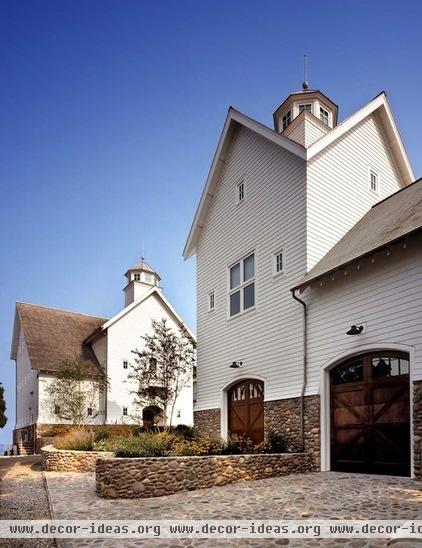
Sometimes, however, the answer for saving water is a little more hardscaping and a little less lawn. The approach works well for this traditional farmhouse in New York.
If you add hardscaping, try to design it in a way that allows water to seep into the soil below. In other words, don't create a solid concrete or stone surface, but rather one that's permeable. That will reduce risks of soil erosion where the water leaves your hardscaping and will reduce the load on your municipality's storm water sewers.
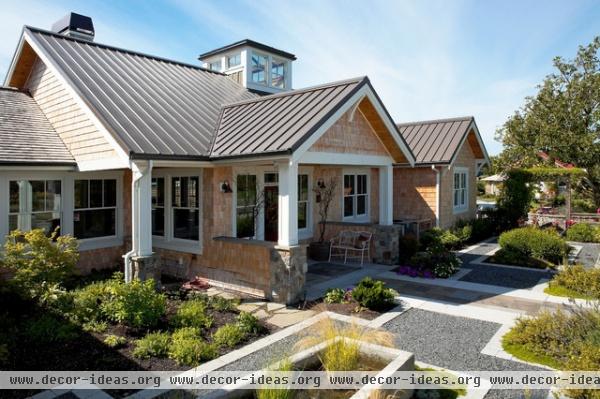
Segmenting a garden with walls and pathways reduces the planting area — and water demand — while creating interesting spaces and providing natural focal points. What's more traditional than a courtyard garden?
(A huge shout-out to Ira Johnson of Rainscape Design in San Francisco for his invaluable assistance identifying the plant varieties shown in this ideabook.)
Related Articles Recommended












